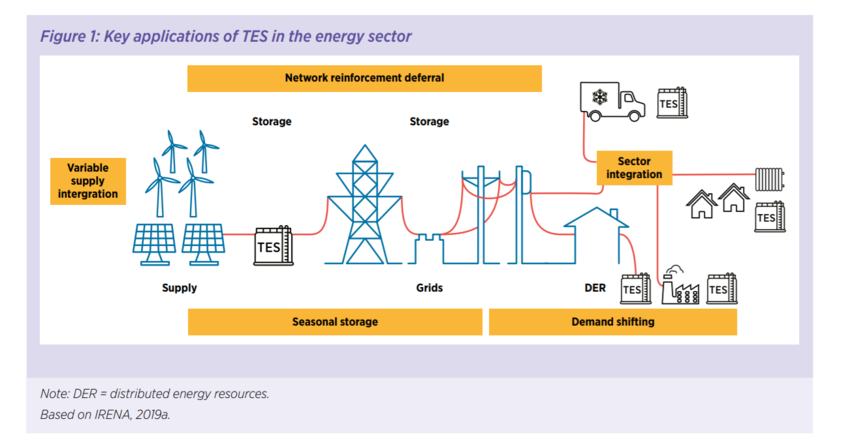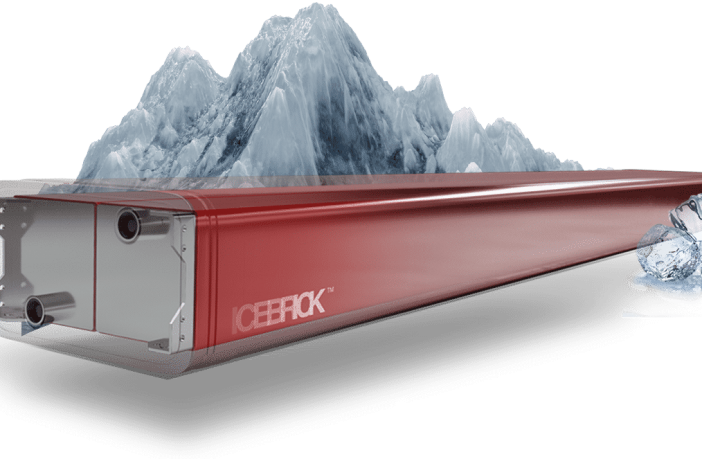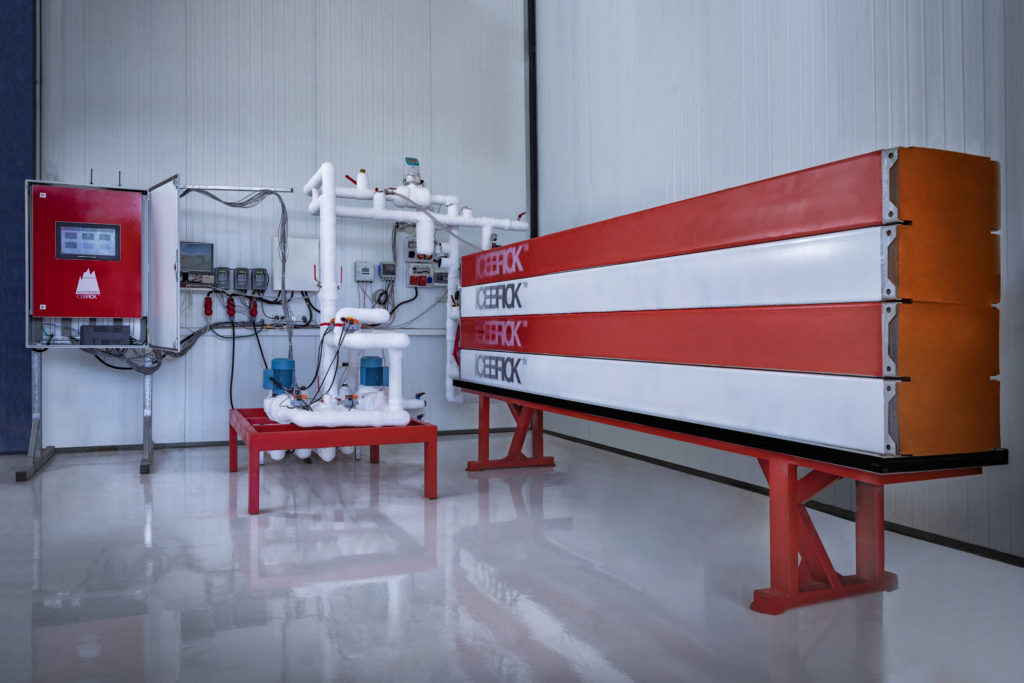- A large share of peak electricity demand in the energy grid is driven by air conditioning, especially in hot climates, set to become a top driver for global energy demand in the next 30 years.
- The energy-storing capabilities of ice could provide a more efficient, climate-friendly approach to cooling.
- Thermal energy storage like this can also address the need for storing surplus renewable energy to balance out the grid at times of peak demand.
- Applications range from district heating and cooling to power generation.
The cooling properties of ice don’t need to be explained. But did you know that ice can store energy and help companies reduce their carbon footprint in the process?
A huge portion of the peak demand in the energy grid is driven by air conditioning, especially in hot climates. Energy use for cooling buildings has doubled over the past two decades, with warmer temperatures being one of the main drivers, according to the International Energy Agency.
Air conditioners and electric fans account for around a fifth of total energy consumption in buildings. This equates to a tenth of all global electricity consumption. In the next three decades, air conditioning is set to advance to one of the top drivers for global energy demand – not just in hot countries – such as China and India – but also in the rest of the world.
Most of this energy is sucked up by chillers, which cool down the water and pump it through the building to lower temperatures. It’s a highly energy-intensive process, making a big dent in our ability to reduce energy usage and carbon emissions.
The energy-storing capabilities of ice could provide a more efficient, climate-friendly approach to cooling with the help of thermal energy storage.

How demand for air conditioning is growing globally. Image credit: International Energy Agency
Putting space cooling ‘on ice’
This is the premise behind start-up Nostromo’s ‘Icebrick’ technology, which promises to cut the environmental and financial cost of air conditioning for large commercial buildings.
The idea is simple: the Icebrick converts water to ice using electricity at times of low demand, for example at nighttime, or when there is a surplus of electricity from renewable sources such as solar and wind farms. During the day, it discharges the energy by melting the ice and pumping the cold water through the building until temperatures drop in the evening.
Nostromo’s ice-powered clean energy platform. Image credit: NostromoIn this way, it not only relieves the electricity grid from the intense energy demands of air conditioning and lowers electricity costs for building owners, but it also offers a storage solution for excess renewable energy that would otherwise go unused.
Storing surplus renewable energy is critical for balancing out the intermittent nature of renewables and one of the biggest challenges on the road to reaching net-zero emissions and halting climate change.
Making renewable energy dispatchable – which means easy to access on the grid, even when there is not enough sun or wind – is critical for maintaining energy security and flexibility. It also means that we can rely much more on renewable energy, where we currently still need backup power sources we can easily turn on and off to accommodate peaks in energy demand.
Batteries are the obvious choice for storing surplus electricity generated at times of low demand and tapping it up when demand peaks. But they cannot stand on their own. This is why the IEA, in its 2050 roadmap, has stressed the need to accelerate the development and commercialization of other forms of energy storage.
One of these is ‘Power to X’: technologies that use surplus electricity at times of low demand for example to generate green hydrogen for industry and transportation, or, as in this case, thermal energy storage (TES).

Applications of thermal energy storage. Image credit: IRENA
Scaling energy storage solutions
Nostromo’s Icebrick is not the only solution in this area, reflecting the multitude of efforts underway to resolve the energy storage challenge. TES solutions cover both heating and cooling media as interim repositories for electricity.
Nor is the application of the technology limited to commercial buildings. TES can be used in district heating and cooling, in the transportation of chilled or frozen products (cold chain) and in solar power generation, where molten-salt storage is already commonly deployed.
The International Renewable Energy Agency (IRENA) has stressed the need for more investment in developing thermal energy storage technology and for measures to boost the market for these solutions.
The World Economic Forum is contributing to these efforts via its UpLink platform’s dedicated stream for new technology innovation to accelerate the transition to clean energy through grassroots innovation and partnership.
But developing thermal energy storage will only be one side of the coin: the bigger challenge will be to ready new technologies such as this so that they can be deployed at scale, and rapidly, to counter climate change
















